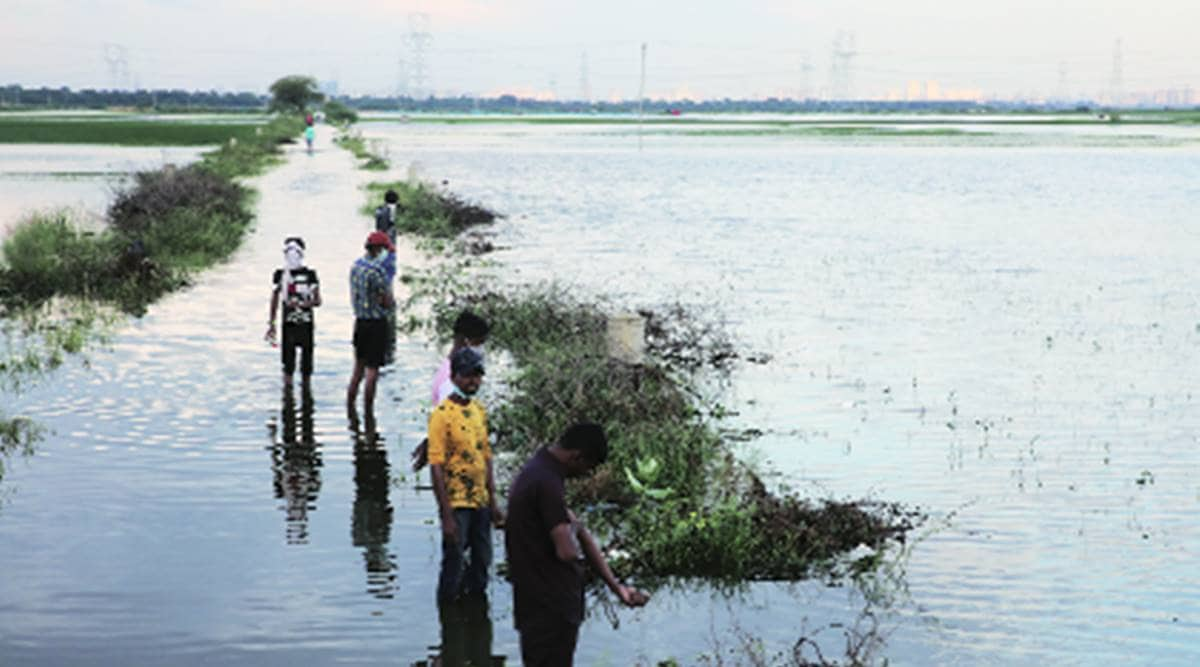 The Najafgarh jheel is an important site for large numbers of winter migratory birds, the census affirmed. (Representational image)
The Najafgarh jheel is an important site for large numbers of winter migratory birds, the census affirmed. (Representational image) The Najafgarh jheel, a transboundary wetland lying in Delhi and Haryana, has recorded fewer species of water birds this year as compared to last year, the Asian Waterbird Census (AWC) conducted at the jheel on Tuesday has found.
The AWC is an annual count of waterbirds that takes place in January, and is coordinated by the Wetlands International South Asia and the Bombay Natural History Society. It is conducted in seven wetlands across Delhi-NCR.
A total of 71 species of waterbirds were counted on Tuesday, while the bird population was estimated to be 10,592. Last year, as many as 81 species of waterbirds were recorded at the jheel, along with a significantly higher number of birds at 27,673.
The Najafgarh jheel is an important site for large numbers of winter migratory birds, the census affirmed. Among the winter migratory waterbird species recorded were the greylag goose and the bar-headed goose, which migrate from central Asia, and the Eurasian coot, which migrates from north Asia.
Some waterbirds which are on the IUCN list of ‘threatened’ species were also found at the jheel. These include the greater spotted eagle, a migratory bird that flies in from Siberia or Russia, and the northern lapwing, another winter migratory species. A few resident species at the jheel have also been marked as ‘threatened’ – the sarus crane, the wooly-necked stork, the painted stork and the oriental darter.
Over the past two years, the jheel has recorded a fluctuating number of bird species. In 2020, for instance, only 54 species were recorded, lower than the number spotted last year. Only 9,453 birds were counted in 2020, even lower than the numbers recorded this year. T K Roy, AWC Delhi coordinator for Wetlands International, pegs the lower numbers on local factors like large-scale, excessive fishing in the jheel which disturbs the birds, along with a possible change in migratory patterns due to climate change.
Manu Bhatnagar of the Indian National Trust for Art and Cultural Heritage (INTACH) said fishing is one of the issues since depletion of the fish population leaves fewer resources for the birds, and the fish tend to attract birds to the wetland. “The quality of water coming from the Haryana side is very bad. There’s untreated industrial effluent coming from Manesar, and under-treated sewage, which leaves low oxygen and poor quality of water. These are factors that affect bird populations,” he said.
INTACH first approached the National Green Tribunal (NGT) in 2014 regarding the rejuvenation of the Najafgarh lake, and filed another application in 2019 saying that both the Delhi and Haryana governments had not taken any measures, and asked the tribunal to direct both governments to declare the jheel a “wetland/waterbody”. The two governments were then directed to form environment management plans for the lake.
The two plans were prepared, and a joint management plan was submitted to the NGT in December last year, Bhatnagar said. The matter is slated to be heard next on January 21.
- The Indian Express website has been rated GREEN for its credibility and trustworthiness by Newsguard, a global service that rates news sources for their journalistic standards.

